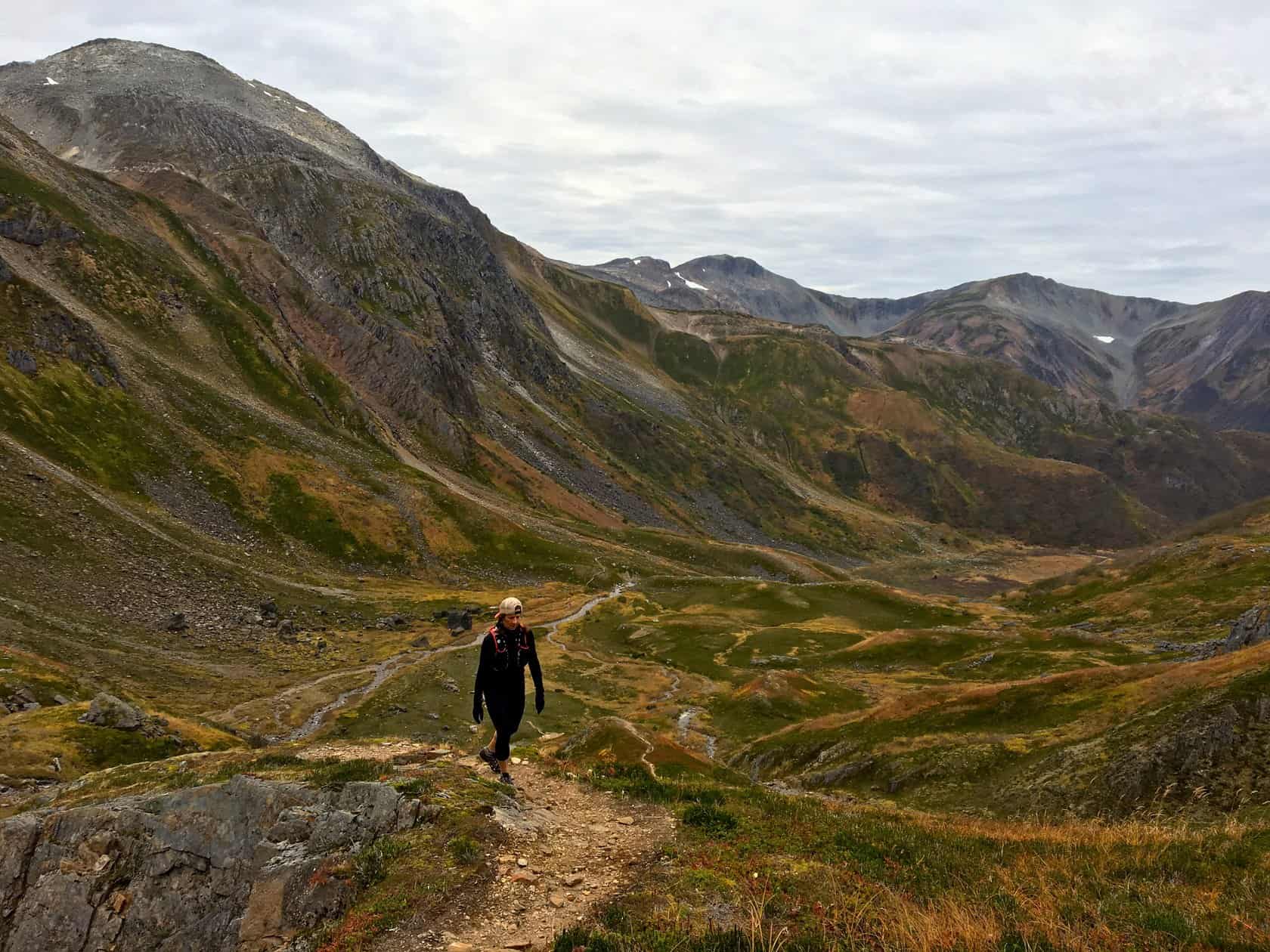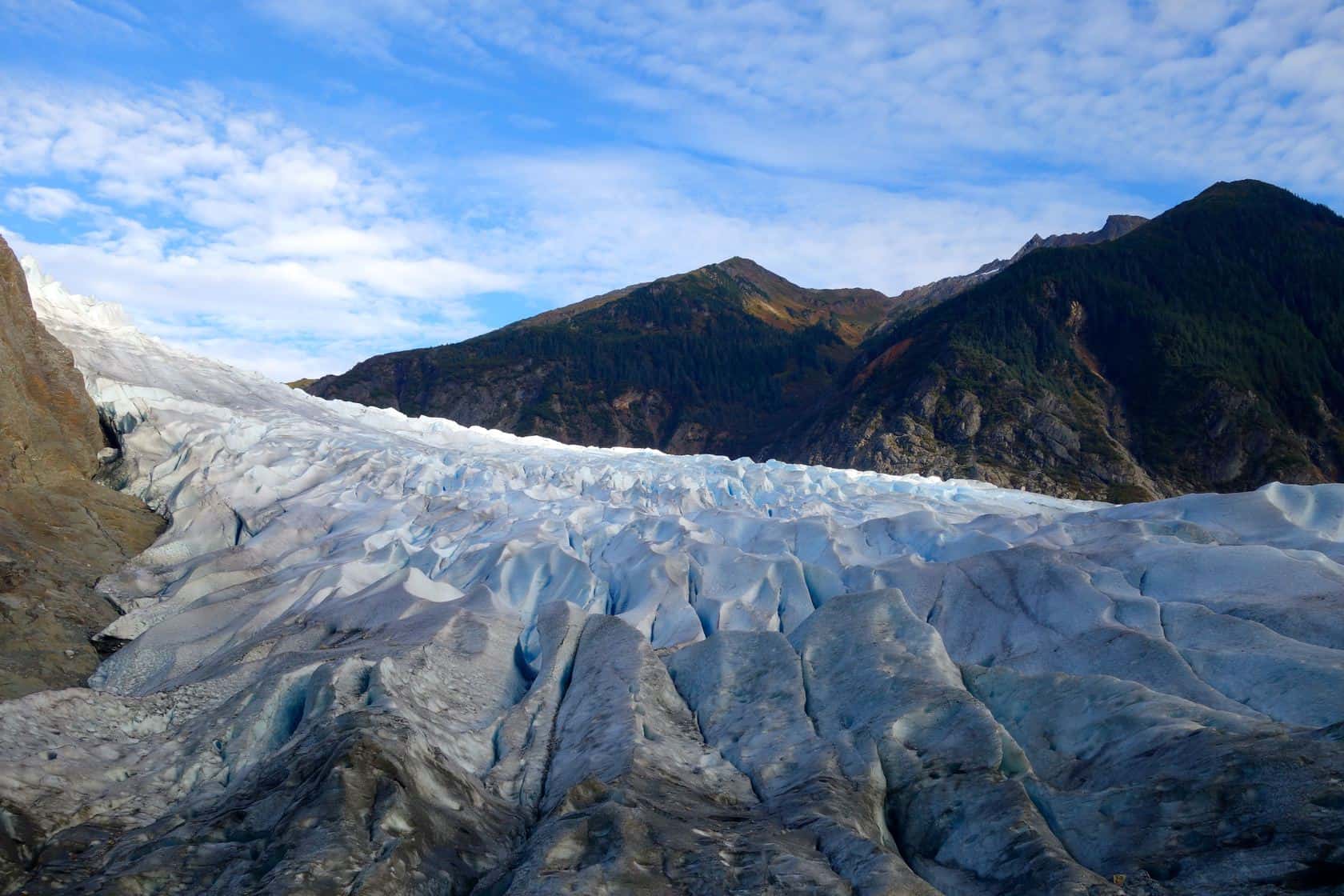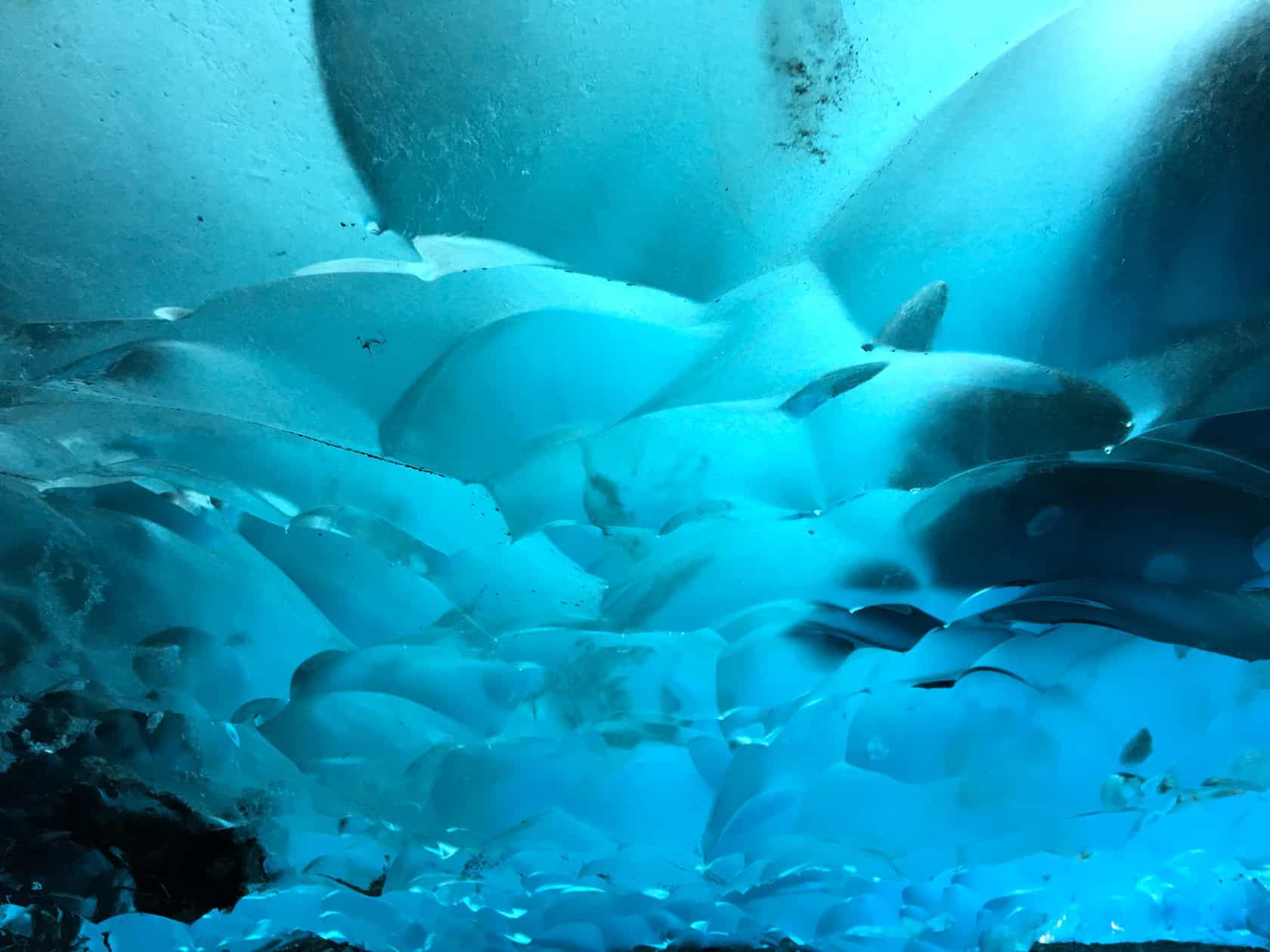Travel is good for a great many reasons.
For me, two of the most useful ones are that it removes a one from one’s routine and, at the same time, exposes the traveler to new opportunities. I’m far more likely to give fishing a try in Alaska than when I’m at home in Moab, and I most certainly can’t spend my nights watching the aurora back home in Utah. For me, no part of my Alaska adventure exemplified the adventurous spirit more than my time in Juneau.
In hindsight, there’s a very distinct break involved in any trip to Juneau, as one cannot drive there. To get there, you take either a plane or a boat. I traveled via the latter, taking a ferry down from Haines further north on the Alaskan coast. Not being one to travel by water frequently, this felt like going somewhere very different. Despite being chilly from the ferry’s quick progress on a cool evening, I long stood on the deck, taking in the voyage down the inside passage.
I spent my first day in Juneau catching up on work and getting my feet back under me. Meanwhile, former Western States 100 champ Geoff Roes arranged a small group run in the mountains above downtown Juneau for the following day.
That next morning, Geoff and I left his house and popped over a hill to meet up with three of his friends. From there, we gently climbed a few miles of dirt road followed by another couple miles of singletrack into an alpine basin. From there, we crossed the basin and started the real climb up Olds Mountain.

The first section up Olds—a mix of singletrack and easily navigated rock on low-angle terrain–is well within my wheelhouse. It’s from there that I exit my comfort zone. We go from traversing the mountain’s south face as we climb to climbing straight up the mountain’s southeastern shoulder. We pick our way up. We’ll traverse a bit, then climb a small ledge, then traverse again in either direction to the nearest reasonably negotiated ledge. The mountainside is a series of small granite cliffs with steep, vegetated bits between the rock outcroppings. Unfamiliar with the traction provided by either the rock surface or the local flora, I take my time.

Did I mention I really don’t like exposure, i.e., proximity to a precipice? It’s not extreme here. This isn’t any class 4 or 5 scrambling, but I’m certainly uncomfortable high on the mountain. I make sure to focus on the mountain face in front of me and avoid looking down or backward… especially as I’m making the two or three or four foot placements up each ledge. The apparent sketchiness of the effort increases as we near the summit and the recent snow—termination dust in the local lingo, as it marks the end of summer—clings to the angled rock and vegetation. I slow down further as I kick clear footholds and try to keep my hands functionally warm as the winds whip my now wet gloves in the near freezing temps.
We stand in wonder once we get to the summit. We can make out some of the glaciers coming off the Juneau Ice field to northeast, while the light to the southeast is spectacular as it filters softly between mountain and sky. The locals proudly point out this mountain and that peak while recounting runs gone by. I collect my wits.

While we’re at the top, the summit ridge is nearly all rock… well, more precisely snow-covered rock that requires striding from pedestal to pedestal. Exposure is no longer an issue, but I have no confidence on the unfamiliar local rock and snow combo. That uncertainty increases as we start to down climb the other side of the ridge. I’m the anchor on the much more comfortable remainder of the group. These locals know their stuff. Eventually, we drop out of the snow and rock, and I return to my normal trail running comfort level as we cross a saddle and head onto the miles-long Juneau Ridge that culminates in a fantastic viewpoint over downtown and a glorious singletrack descent—highlighted by a lone mountain goat holding court over the trail—back to our group’s starting point. There, I’m thankful for the views, the company, and, in retrospect, for having my mountain travel boundaries pushed by the group and the route.

The following afternoon, I met up with Cecile, one of the runners from the day before. While out on the trail she’d invited me for a bit of a kayaking adventure. Despite living in Moab, Utah, a hotspot for self-propelled water adventures on the Colorado River, I can count the number of times I’ve recreated on water in my adult life. It’s not many. I can swim just fine, but I’m decidedly a creature of the terra firma!
Cecile gave me a quick run down on how to use the ocean kayak. There was some instruction on technique and a bit on how not to tip the boat over. I managed the latter part well enough, but the technique was going to take a bit of getting used to. Paddling was easy enough. Outbound, I was generally inefficient with an arms-first-and-only style that could easily enough be called the T-Rex Technique… and, let me remind you, the might tyrannosaur was not known for its forelimb strength. Occasionally, I’d mix in bouts of exaggerated torsional motion… and, well, that worked a whole lot better, but it distracted me from steering the kayak, which was my biggest challenge. I could make broad directional changes well enough with asymmetrical strokes and full use of the foot pedals that controlled the rudder. It was maintaining a straight heading that was the bigger challenge, as I found it hard to neutrally rest both feet equally on the foot pedals. Perhaps, I needed to let out the pedals a bit further for some more room in the kayak or, perhaps, I needed to better anchor myself with my upper legs rather than my feet. I’ll never know. Still, stroke-by-stroke, I powered myself the mile-and-a-half across Lake Mendenhall with increasing ease. I even felt comfortable enough to stop occasionally, pull out my camera, and snap some pics of a lakeside waterfall or go grab one of the small icebergs on the lake.

Having made it to the toe of the massive Mendenhall Glacier, we beach our kayaks and trod up the lateral moraine aside the glacier in our quintessential Xtratuf boots. Our reason for being there was to check out the glacier’s famous ice caves, and we didn’t see any on our half-mile trek up the moraine. One our way back down, we more closely investigated a couple leads and, eventually, found a possible route to at least an ice alcove. The steep decent down the glacier was fun, especially on the soft glacial till and not as much when we hit slanted sheet ice under the till. (This is a glacier after all!) As we dropped down a stream over bedrock into the alcove it became clear that we’d found an ice cave.

Now, I’d generally put the likelihood of me going into a glacier into the heeeeelllll-no category. Heading underneath few megatons of shifting, unstable ice… well, that’s just not my thing. But, seeing as how I was already there and nothing too big seemed to be collapsing at the moment, why not! I went in. The truth is the otherworldly aquamarine light pouring through the glacier on the mostly sunny day was akin to a siren song that was impossible to ignore. Better, more rational thought was helpless against thus onslaught of beauty. After passing through the stories-tall entryway, the cave tapered to six-to-eighth feet for quite a ways. At this height, you could walk in wonder, touching the underbelly of the glacier or staring closely as single drops of water trickled down ice arches to focal points between the bubble-like cavities overhead. Drop by drop the glacier was melting.

Once or twice we heard rocks fall from overhead, but, in the moment, it wasn’t too fearsome. You could see darker rock-bearing bands overhead and easily spot where there was debris exposed on the under surface of the glacier. As long as you moved quickly under the former and avoided the latter, the situation seemed safe enough for a few minutes of exploring. Gradually, the cave tapered to five, then four, and on down to three feet above the cobbled floor. Fifty or more meters away, light shown brightly, if indirectly at the edge of our view. It was tempting to make a push down to the end of the cave, but we thought better of it. On later inspection from outside and above that turned out to be a wise move as there was plenty of recent collapse activity at that far end. All in all, my fifteen minutes in the ice cave are an experience I won’t soon forget.

Ah, but there are evening appointments to keep, so we head back up the moraine and down to our kayaks. On the paddle back across the lake, I feel much more confidence and much faster. I have a bit more finesse with the foot pedals and manage to find a strong and steady core stroke. I feel good enough to veer off to the left to check out a small iceberg. As I reach it, I hear Cecile whistle behind me. I pause, look back, and check out where she’s looking. Moments later, I spot a black bear high upon the northern shores of the lake. As Cecile starts paddling that way, I reverse course and head over.
We take up position offshore and slowly mirror the bear’s progress back toward the glacier. It generally makes its way closer to the shore as it forages for food, what appears to have been alder catkins and, perhaps, some berries. It comes closer to the shore and gives a quick sniff, but never acts the least bit aggressive and heads right back to eating. We sit just offshore taking in the sight of this massive black bear. It’s only in these kayaks that we feel remotely safe hanging out this close to such a large bear.

After five or so minutes we leave the bear and paddle off towards the visitors center. Along the way, we spot a pair of twenty-something guys trying to pull off a set of dynamic moves while bouldering. We again sit just offshore. After the a few attempts from the pair, one completes the small crag and we break our silence to cheer before shoring our kayaks and heading off.

Now, I’m not going to take up scrambling around my slick-rock home nor will I be roping up to cross an ice-field any time soon. I also won’t be plotting a course to kayak around the Salish Sea next summer. That said, my time in Juneau reminded me that I do enjoy pushing my boundaries a bit at a time. It reminded me that expanding my skill sets and comfort zones with regard to self-propelled travel only opens up additional amazing opportunities. It reminded me to keep an open mind the next time I’m traveling… or when I’m at home and someone suggests an activity or route that my makes me a bit anxious just thinking about it, well, perhaps, I should at least give it a shot.

